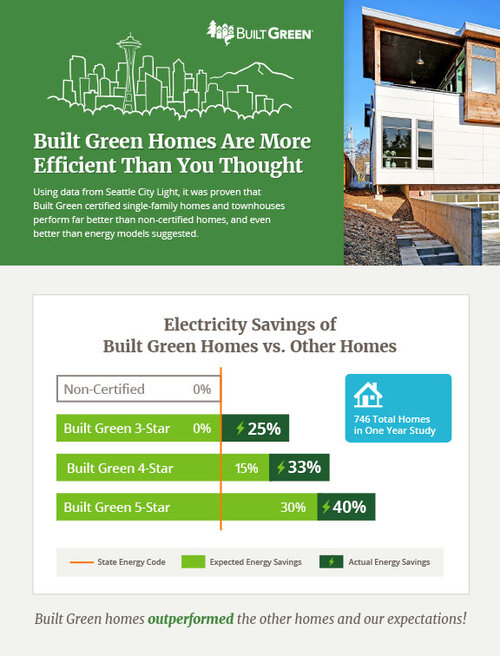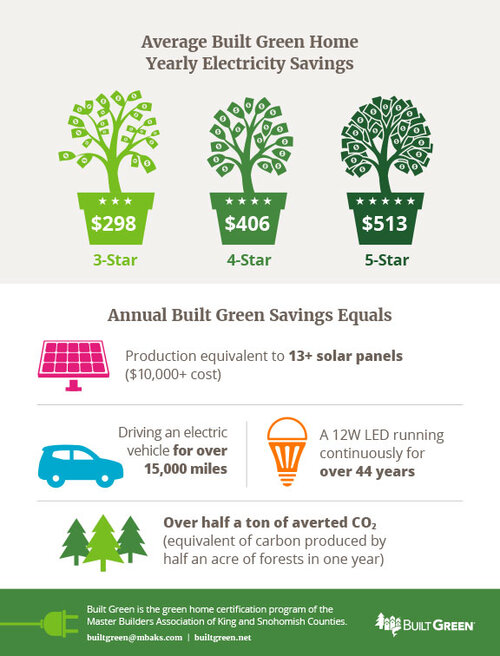If we’ve reached you in error or the timing’s not right, click here to opt out.
1. SAVINGS
A Built Green home often saves money on operating and maintenance costs by using more efficient energy sources, such as additional insulation and more efficient water heaters, lighting, and appliances. Natural daylighting strategies can help to reduce energy use. Efficiency equals more money in your pocket!
2. HEALTHIER AND MORE COMFORTABLE LIVING
There’s no need to be concerned about that smelly coat of paint or new carpet odor. Using low VOC and low toxic interior paints and finishes minimizes pollutants while improving indoor air quality in a home. This improves the health and comfort of your household.
3. CONSERVES NATURAL RESOURCES
Rapidly renewable materials like bamboo, cork, and strawboard can be managed, grown, and harvested in a sustainable manner, successfully replacing traditional lumber. Countertops created from recycled glass, concrete, and paper are aesthetically beautiful and do not require the use of traditional or precious stones. From flooring to cabinetry to building supplies, there are hundreds of low-cost, environmentally friendly solutions available today!
4. HEALTHIER HABITAT
Water conservation can be achieved by planting drought tolerant landscaping and avoiding turf grass. Pervious pavement can be used in driveways and walkways to allow rainwater to seep into the ground instead of polluting stormwater runoff. Erosion control methods are used to help reduce sedimentation into streams and protect the natural features of the site. All of these methods benefit aquatic habitat, which makes for healthier ecosystems.
5. IT REDUCES YOUR FOOTPRINT
Building a more efficient home lowers your water, energy, and carbon impact. Reducing your energy and water consumption saves resources and has a lower impact on our climate and ecosystems, resulting in a cleaner, happier planet Earth.


LEED (Leadership in Energy and Environmental Design), the most extensively used green building rating system, provides a framework for designing buildings that are cost-effective, healthy, and sustainable. Between 2015 and 2018, LEED-certified buildings saved $1.2 billion in energy and resources while also lowering operational expenses. It’s also excellent for your health: LEED buildings provide clean air, access to daylight, and reduce or eliminate the use of toxic chemicals found in paints, finishes, and other construction materials.
To obtain a LEED rating, construction projects must earn points in the following categories that address key aspects of green buildings: integrated process, location and transportation, sustainable sites, water efficiency, energy and atmosphere, materials and resources, indoor environmental quality, innovation, and regional priority. Projects can be certified, silver, gold, or platinum ranked, depending on the number of points earned.